"Normal is an illusion. What is normal for the spider is chaos for the fly.”
Morticia Addams
Goth: the archetype of the beautifully morbid, the flower meant to bloom in moonlight.
The core stylistic elements of the Goth archetype are: Monochromatic Mourning, Rebellious Theatrics, Ornamental Gloom, Textural Layering, and Decadent Decay.
The Goth Archetype bloomed in the shadow of moonlight, with roots that twisted through centuries of melancholic inspiration, entwining the somber elegance of Victorian mourning dress and 19th-century Gothic literature. The spectral prose of Edgar Allen Poe and works by Mary Shelly blossomed in the Victorian Era, as grief became ritualized through a new kind of fashion. What used to only be worn in mourning was brought into the light of day through black crêpe, heavy lace, deep velvets and jet jewelry— the somber and ornate combining to become a foundational influence on Goth’s aesthetic sensibility. Adorned in fishnet layers, Baroque and Victorian-inspired corsetry and ornamental accessories, Goth became more of an ethos than mere fashion: a dedication to beauty it its most tragic form.
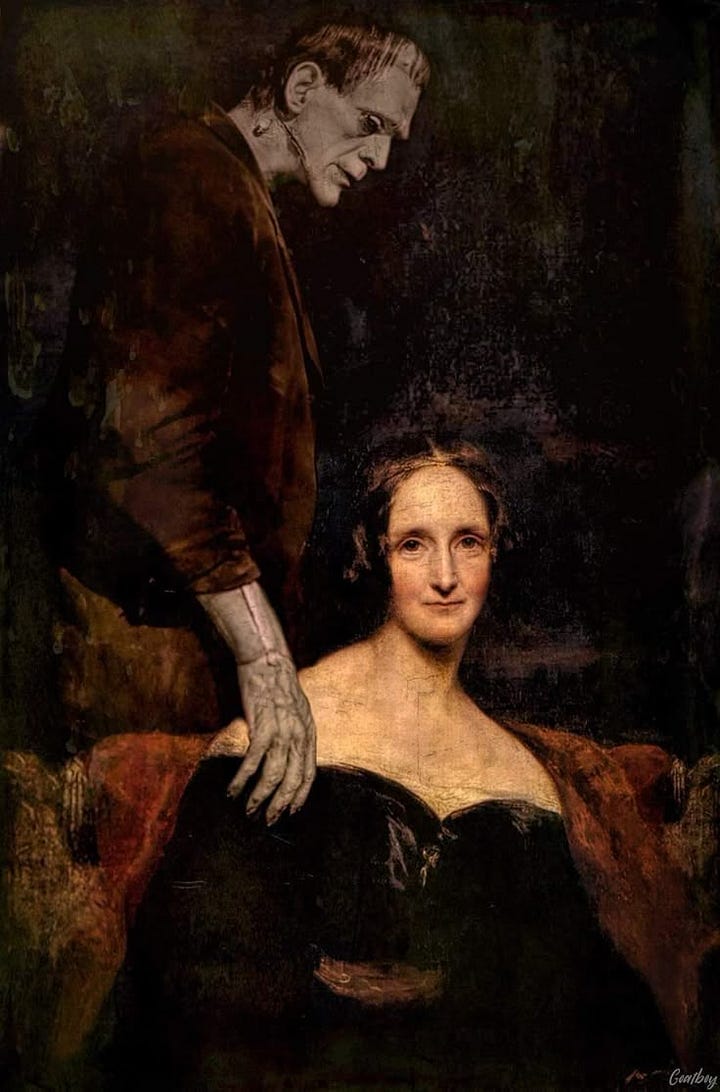
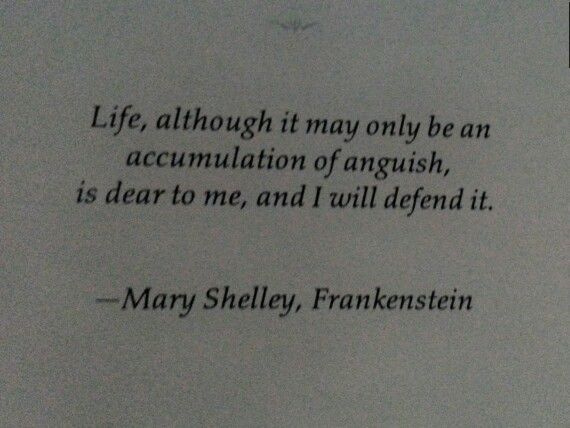

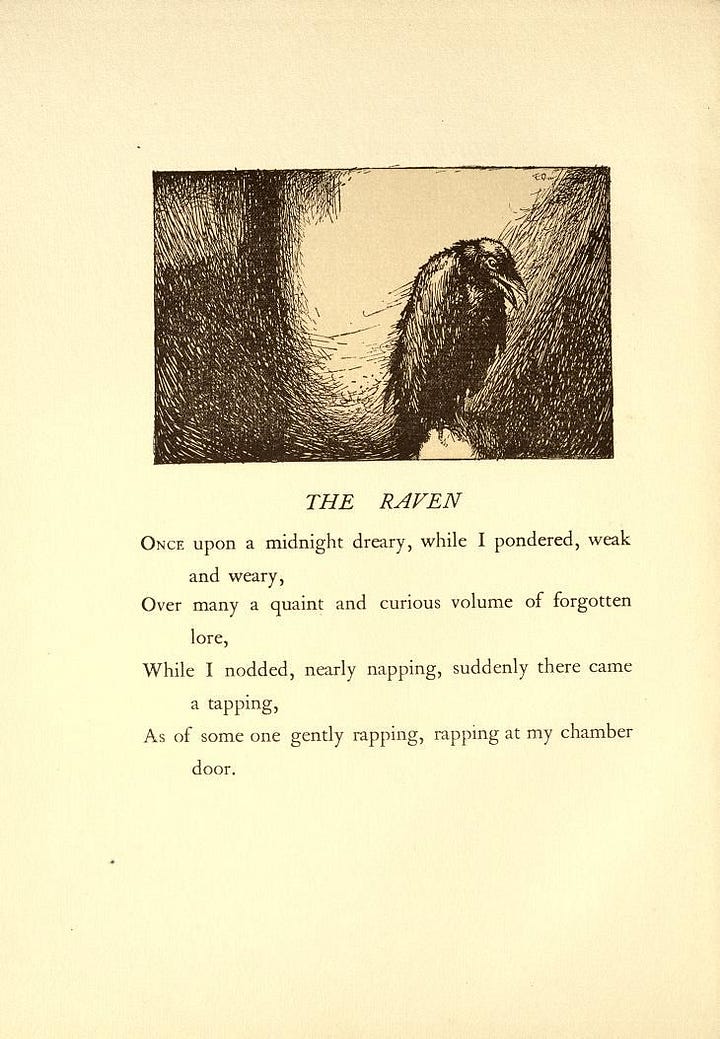
While the age of the living dead has been breathing for centuries, the modern incarnation of Goth didn’t become popularized until the late 1970s and early 1980s, where it emerged from the embers of post-punk subculture in the UK. It was an opposite sister of Punk’s loud and incendiary form, where Punk sought to dismantle, Goth sought to resurrect. Goth turned inward, embracing melancholy over rage. Shaped by the lingering fog of Gothic literature, the expressionist distortion of early horror cinema, and the introspective darkness of symbolist poets like Charles Baudelaire.
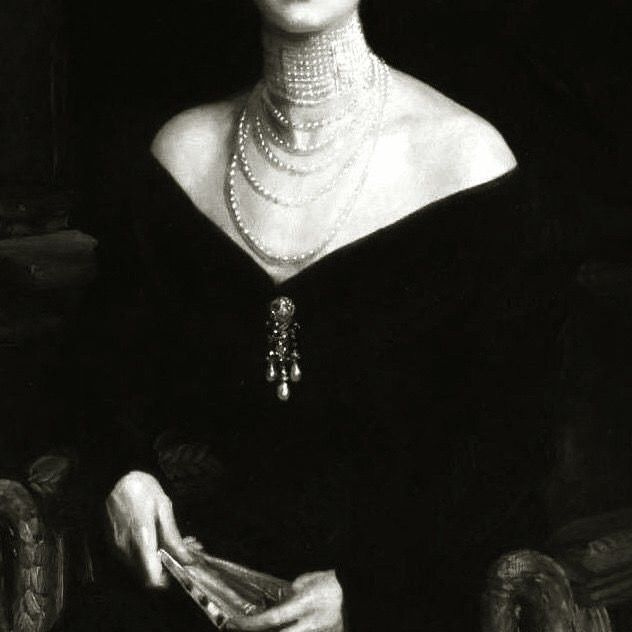
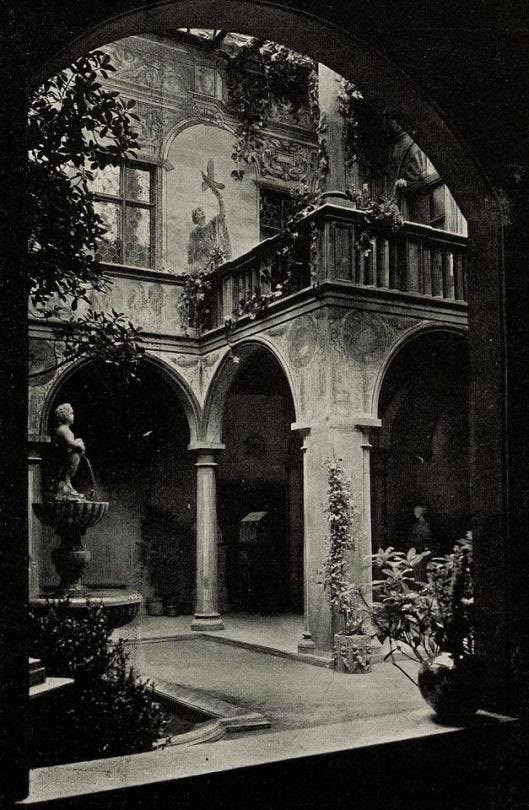
By the 1990s and early 2000s, Goth had spread its roots into a diverse ecosystem of subcultures. Romantic Goths drew inspiration from Pre-Raphaelite art, with its medieval motifs, ethereal figures, and vivid romanticization of death and decay. In contrast, Industrial and Cyber Goth placed technology, futurism, and dystopia at the forefront of their aesthetic, abandoning lace for leather and candlelight for the glow of strobe.
Vivienne Westwood, the high priestess of the punk scene (discussed earlier in this series), infused historical silhouettes with her signature cheeky rebellion: her runway shows adorned with corsets, baroque tailoring and bustles, details that made her designs feel both anarchic and antique. This incredible aura gave Goth a new kind of structure, one that married the romanticism of decay with a deathly elegance.
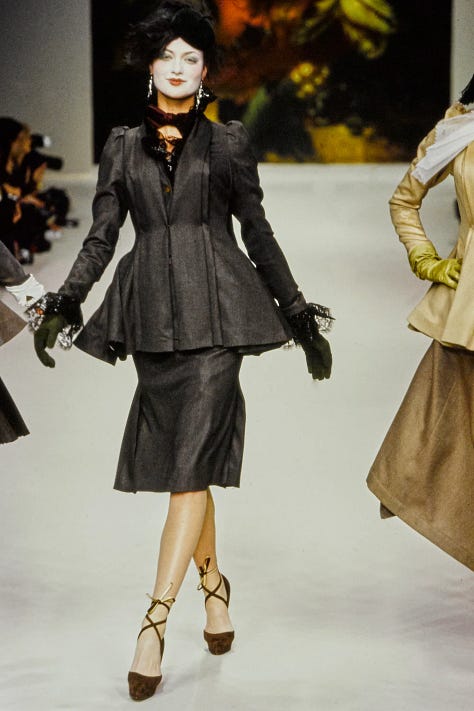
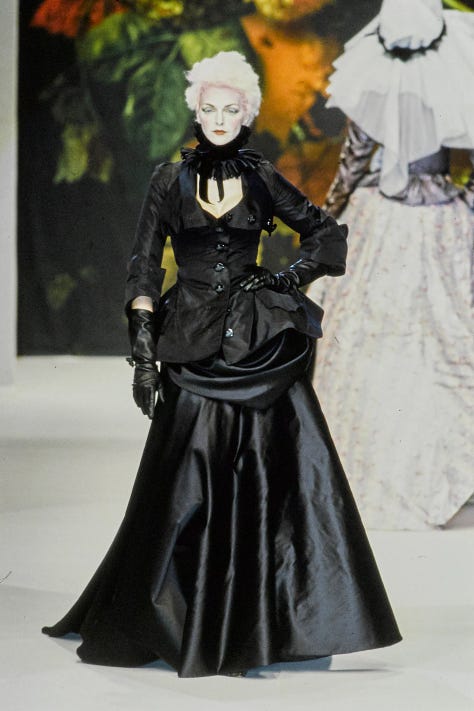
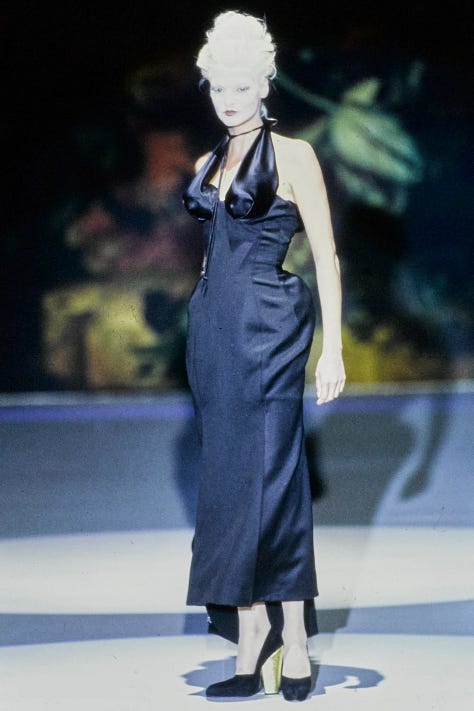
Jean Paul Gaultier brought high holy drama and androgynous sensuality to the runway, merging sheer fabrics and lace with religious motifs, creating a delightful canonical clash. His work paid homage to Gothic architecture while giving a wink to fetish wear, pushing Goth into the realm of avant-garde couture.
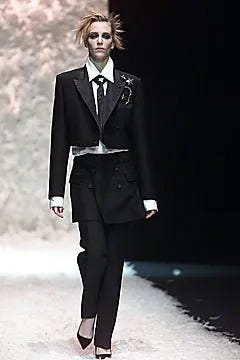
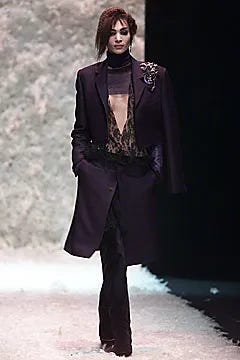
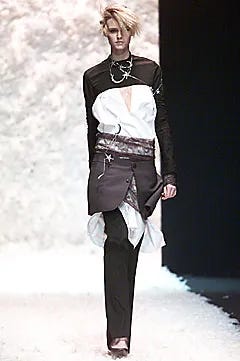
One of the most notable influences came from Lee Alexander McQueen, who elevated Goth into a kind of poetry in motion. Drawing from Victorian mourning, medieval silhouettes, and the macabre beauty of decay, his collections like Dante and The Widows of Culloden turned darkness into high drama—transforming sorrow into a shocking spectacle.
Emily Brontë’s Wuthering Heights (1847), Bram Stoker’s Dracula (1897), and Mary Shelley’s Frankenstein (1818) remained a central focal point of inspiration that remained prominent, even as Goth continued to evolve into the early 2000’s. The runways of McQueen, Owens and Yamamoto gave Gothic aesthetics a throne in high fashion, its spirit reverberating worldwide inside of the minds of millions.
It’s important to note that mainstream culture has long since distorted Goth’s image—reducing it to a hollow echo of what it truly is. Halloween shops, cheap, clichéd fishnet gloves, and surface-level "dark aesthetics" are nothing more than costumes, designed for and by those who crave the fleeting high of momentary shock-value. These commercial imitations are nothing compared to the original interpretation, as they strip this rich aesthetic of the historical weight, emotional nuance, and philosophical intent that made it meaningful and necessary.
To embrace the Gothic aesthetic, to embody this archetype intentionally, you must be deeply romantic. It does not seek attention, but commands it by standing intentionally apart—a quiet act of defiance in a culture obsessed with brightness and conformity. Informed by centuries of art, architecture, literature, and music, it’s an expression of the power of solitude, darkness, and the heavy weight of the misunderstood. To be Goth is not to mimic darkness, but to commune with it.
The most iconic living embodiment of Goth is Siouxsie Sioux.
As the lead singer of Siouxsie and the Banshees, one of the most influential post-punk bands of the late 1970s and early 1980s, she forged an aesthetic and sonic identity that would become the blueprint for Goth itself. It was her aesthetic presence, somehow both feral and regal, otherworldly, that crystallized what Goth would become. With her sharply drawn eyes, sculptural black hair, and an unapologetic wardrobe of leather, lace, veils, and spikes, she transformed emotional intensity into language that still reverberates through fashion and culture today.
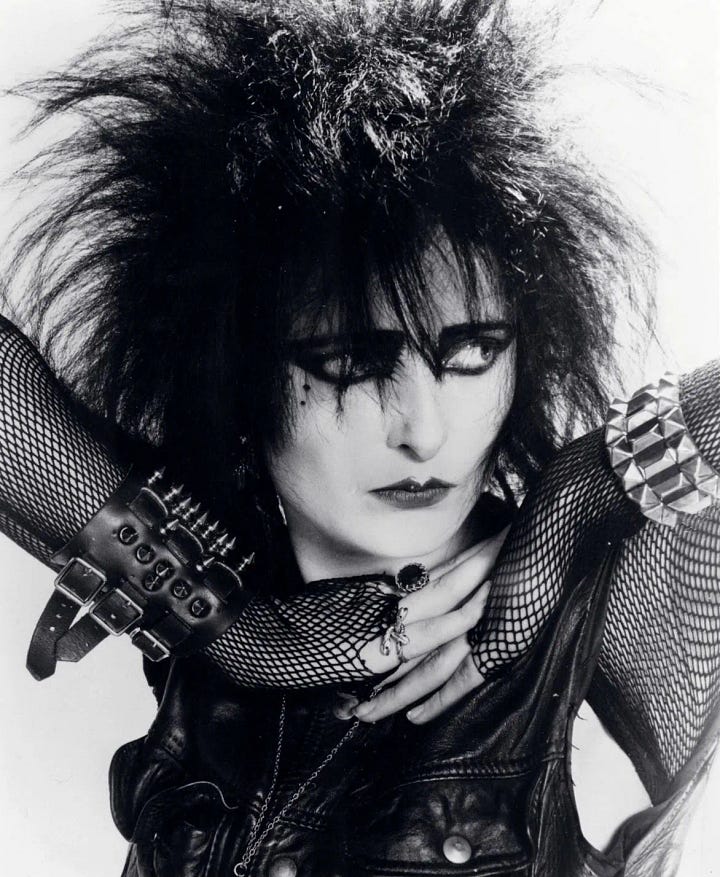

The best fictional embodiment of Goth is Morticia Addams.
Morticia Addams is more than a character—she is the distilled essence of Gothic elegance, an eternal icon whose presence transcends time itself. In floor-length black gowns, she glides rather than walks—less a woman than a living silhouette. Her porcelain skin, raven-black hair, and serpentine poise all make her irresistible, a gothic kiss of grace, she is otherworldly allure. While others seek to break the rules, Morticia was never bound by them in the first place.
In summary, let’s review the five core competencies of the Goth Aesthetic once more:
Monochromatic Mourning: Goth thrives in a world drained of color—black not as absence, but as presence. It draws directly from the ritualized grief of Victorian mourning, where sorrow was worn in layered fabrics and jet adornments. This is not nihilism, but reverence—an intentional dressing of the spirit in shades of solemnity.
Rebellious Theatrics: Every gesture of Goth is deliberate and defiant. From sharp silhouettes to dramatic makeup, this is an aesthetic that commands the gaze while refusing to explain itself. It revels in performance—not to entertain, but to exist unapologetically as art.
Ornamental Gloom: Goth elevates darkness into decoration. Lace, brocade, crucifixes, and cameos turn mourning into magnificence. Jewelry resembles relics, garments hint at relics of another era. It’s a style that lives in the tension between the sacred and the haunted.
Textural Layering: This aesthetic builds like a cathedral—layer upon layer, structure over softness. Corsets, flowing capes, gloves, fishnets, chokers—the body becomes an altar, styled with tactile intent. The interplay of sheer and opaque, leather and lace, rough and refined, transforms dressing into a sensorial ritual.
Decadent Decay: At its core, Goth is a love letter to impermanence. It romanticizes the ruined, finds elegance in erosion, and reveres the melancholia of things fading. Whether in torn hems, smudged eyeliner, or distressed fabrics, it finds poetry in what others discard—celebrating the beauty that lingers in loss.
Goth has never been merely an aesthetic. It’s a realm, a way of being.
Often misunderstood, even mocked, it remains sacred to those who see its true form: a devotion to shadow, to mystery, to the unapologetically singular self.
The Goth archetype was never born from a desire to shock—but from a yearning to dwell where others fear to look. By those who do not flee the dark, but find refuge within it—turning inward with their whole heart and soul.
For in the end, it is not light, but the deepest darkness—the one that lives at the bottom of the sea—that claims us all.
And for that, we should be most thankful.
“Gothic is the belief that love never dies, even when everything else does.”
Guillermo del Toro
With great personal aesthetic,
Alexandra Diana, The A List
GLAMOUR IS DEAD! LONG LIVE PUNK!
"The only reason I’m in fashion is to destroy the word ‘conformity.’”








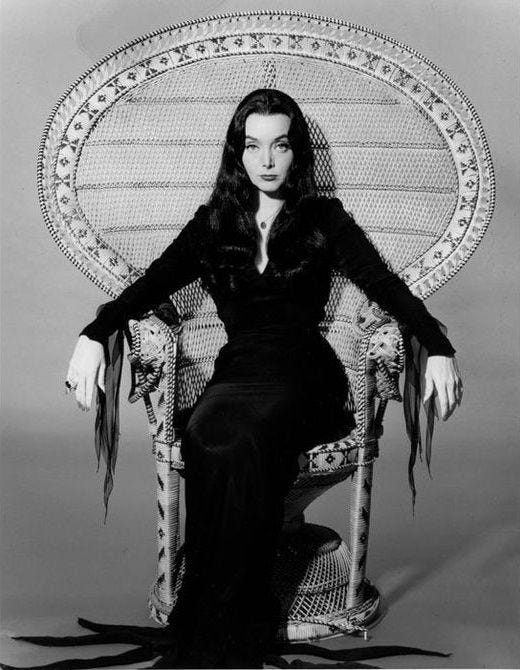



Loved Mary Shelley’s quote in this one a lot!